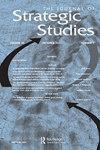俄罗斯的南亚政策:从疏远到实用主义
IF 1.3
2区 社会学
Q2 INTERNATIONAL RELATIONS
引用次数: 0
摘要
本文试图分析苏联和后苏联时期俄罗斯对南亚特别是印度和巴基斯坦的政策反应,并将权力平衡所激发的系统性压力以及国内因素(特别是意识形态和领导人形象)的干预如何在政策制定和执行中发挥重要作用置于背景之下。对苏俄南亚政策的大多数解释都没有提供对内外互动的分析。在分析中纳入国内因素将更好地解释苏俄政策和南亚的关键事态发展。本文采用软实证主义的方法,结合定性和定量的方法对第一手和第二手资料进行分析。本文将俄罗斯南亚政策反应分为四个不同阶段;隔阂(1947-1953)、接触(1954-1971)、印度中心主义(1971-1991)、实用主义(1991-2022):受体制因素刺激和国内因素干预。与美国和中国的平衡和竞争主要促使苏联制定政策,但意识形态、领导人的看法和形象也受到影响。本文章由计算机程序翻译,如有差异,请以英文原文为准。
Russian South Asia Policy: From Estrangement to Pragmatism
This paper is an attempt to analyse the Soviet and Post-Soviet Russian policy responses towards the South Asia particularly India and Pakistan contextualising how the systemic pressures stimulated from balance of power and intervened by domestic factors specifically ideology and leaders’ images played important role in policy formulation and execution. Majority explanations of Soviet-Russian South Asian policy do not offer analysis of inside-out interactions. Incorporation of domestic factors in analysis would provide better explanation of Soviet-Russian policy and the key developments in South Asia. Soft-positivist methodology with qualitative and quantitative methods are employed to analyse data from primary and secondary sources. The paper categorises four distinct phases of Russian South Asia policy responses; Estrangement (1947-1953), Engagement (1954-1971), Indo-Centrality (1971-1991), Pragmatism (1991-2022) stimulated by systemic and intervened by domestic factors. Balancing and competition with the United States (US) and China primarily motivates Soviet Union to shape policy but ideology, leaders’ perceptions and images also influenced.
求助全文
通过发布文献求助,成功后即可免费获取论文全文。
去求助
来源期刊

Journal of Strategic Studies
Multiple-
CiteScore
4.00
自引率
5.30%
发文量
40
期刊介绍:
The defining feature of The Journal of Strategic Studies is its commitment to multi-disciplinary approach. The editors welcome articles that challenge our historical understanding of man"s efforts to achieve political ends through the application of military and diplomatic means; articles on contemporary security and theoretical controversies of enduring value; and of course articles that explicitly combine the historical and theoretical approaches to the study of modern warfare, defence policy and modern strategy. In addition to a well-established review section, The Journal of Strategic Studies offers its diverse readership a wide range of "special issues" and "special sections".
 求助内容:
求助内容: 应助结果提醒方式:
应助结果提醒方式:


